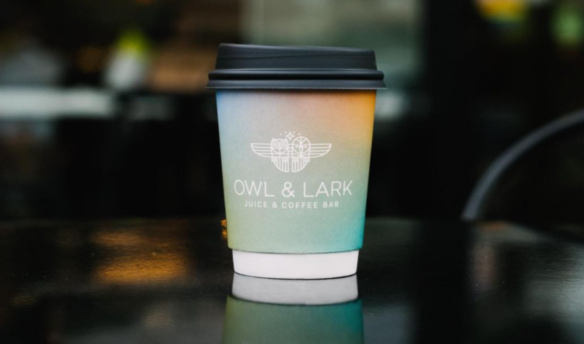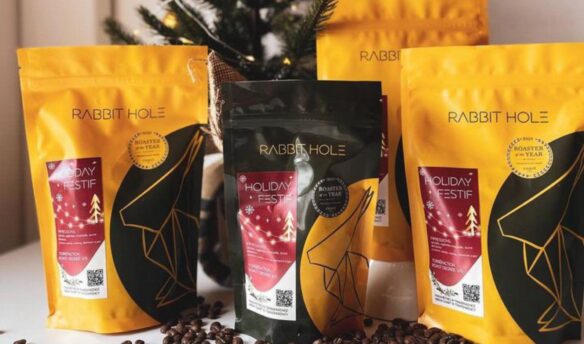When the Rose Establishment opened in Salt Lake City in 2010, it served only coffee and tea, brewed to order, with a selection of baked goods sourced from a local bakery. Manager Cody Kirkland says the brew-to-order concept was foreign to the Salt Lake community: “Customers were like, ‘What the hell do you mean you brew coffee to order? You don’t have it ready for me?'”
The café needed more than pour-overs to survive, so the Rose began its foray into food by offering toast—either cinnamon sugar or avocado—made by baristas between drink orders.
Eventually, the toast menu evolved into salads and quinoa bowls, still prepared by the baristas between drink orders. “We kept growing and growing with what we were doing with food,” Kirkland says.
Below is a detailed breakdown, including photos, of how The Rose Establishment implemented a successful food program. If you’ve ever considered adding a food program to your menu, this guide will help you design and create systems that meet the needs of your space.
Growth of a Food Program
This evolution included adding a convection oven and hiring someone to bake in-house. Then, it grew into buying a decent commercial oven and hiring a bona fide pastry chef. Finally, The Rose Establishment brought on Cori Norton, the café’s first food manager.
Though Norton didn’t have a lot of training, she was confident she could improve the food prep workflow. “When I came on, it took them just a week to prep chili. Each task was assigned to a different day of the week since baristas were still doing all the prep work,” Norton says.
Norton managed the food and pastry programs at the Rose for a year and a half, eventually leaving to gain more experience in other professional kitchens around Salt Lake.
While working at Rye, she met Alicia Pacheco, a professionally trained pastry chef. Long story short: the two hit it off, Norton made her way back to the Rose, then Pacheco joined the staff in January of this year. Norton now works as Rose’s chef, and Pacheco runs the pastry program.
Everything In Its Right Place
In addition to pairing the right people with appropriate training, the Rose has undergone equipment and layout transitions. The most transformative of these was the addition of wooden, modular shelving. The adjustable shelves create a division between the kitchen workspace and customer seating (a division that was not previously clear) and provide storage for both the front and back of house.
Norton says getting the layout just right was necessary for efficiency. “We lost kitchen space by putting the boxes in, so we had to rearrange storage and add shelves above the prep tables,” she says. “We did a lot of measuring to see if staff could fit back there, to make sure two people could be standing in the pathway and actually walk by each other.”
Behind the wall of shelves, the bakery and food teams each have designated prep areas. The tight quarters can make it tough to find work space, so communication is key to ensuring everyone has the space and time to complete prep tasks. The close quarters also have benefits, like encouraging cross-utilization of equipment and ingredients.
Pacheco says the cross-utilization of equipment is tough for baking but great for challenging her creative side: “We all want to do really creative things, and since we don’t have certain aspects of a normal kitchen, we have to be creative to come up with the dishes.”
Below is a breakdown of The Rose Establishment’s various kitchen, prep, and barista spaces and how each area was carefully designed to maximize efficiency and build a creative and exciting menu.
Front of House

Cordoned Condiments: A bench and condiment station create a wall between two support beams, helping traffic flow toward the register. Positioning the condiments away from the pick-up area keeps customers from making a bottleneck.
Baristas Up Front: Customers order and pick up at the bar, where baristas are stationed to prepare drinks, answer questions about the menu, and act as runners for the kitchen.
Everything in Modulation: A formation of wooden cube shelves serves as a wall between the kitchen and café seating area, doubling as storage for the front and back of house (boxes are oriented to face both ways). Spaces were intentionally left open in the wall of shelves to let in natural light from overhead skylights. “That’s important for the whole space at the Rose,” says Kirkland. “To keep it feeling open.”
Prep Station

1) Super Crock: Just out of view is one of the Rose’s soup crocks, used to hot-hold gravy and hollandaise for brunch specials (Soup crocks are also used for soups, naturally). Pacheco and Norton teamed up to bring items like Biscuits & Gravy to the menu; Pacheco already had a cheddar-and-herb biscuit in the bakery, so Norton made a gravy to pair.
2) Mise en Place: Most of the ingredients needed for the menu are portioned out in the flip-top refrigerated table. Norton cross-utilizes many ingredients—house-made pickled vegetables, roasted potatoes, soft-boiled turmeric-brined eggs—to make the most of limited fridge space.
On The Line

1) Beets Me: Casey holds a beet-covered sheet pan (beets are marinated in the shop’s leftover batch brew coffee). The Rose lacks a commercial stove, so much of the shop’s roasting is done using the oven while simmering is accomplished with portable induction burners.
2) Two-Faced Storage: Another look at the Rose’s modular shelf units. Back-of-house shelves near the line store plates, dry ingredients, and to-go boxes.
3) Line Logistics: Nate works on the line, where all brunch and lunch dishes are assembled to order.
Open Shelves

1) Sweetly Sequestered: Shelves in the bakery prep area house some of Pacheco’s secret bakery ingredients, including cocktail bitters, extracts, and candied flowers.
2) Pea Shoots, Pea Scores: Besides letting in light, the open shelves allow for easy communication with baristas and food runners and prevent claustrophobia in the tight workspace. They also make a great space to house the plants Norton grows as ingredients and garnishes, including pea shoots, sprouts, and microgreens.
Extra Storage

1) Local Flavor: The blue shelves contain everything, including local chocolate from Amano and Solstice, used in baked goods and mochas.
2) Roll with It: Butcher block–topped prep tables roll where needed and provide additional options for storage.
In View

1) Duck, Duck, Gooseneck: A digital Bonavita variable temperature kettle is used alongside a pair of Kalita Wave drippers on the manual brew bar. The electric kettle frees up induction burners for use in the kitchen.
2) Innovative Ingredients: Beverage prep remains the most visible behind-bar activity at the Rose. An ever-changing list of signature drinks features house-made bitters, sodas, and syrups—many of which have been crafted by repurposing food menu ingredients.
Photos by Michael Kunde
This article was originally published on July 10, 2017 and has been updated to meet Fresh Cup’s current editorial standards.















